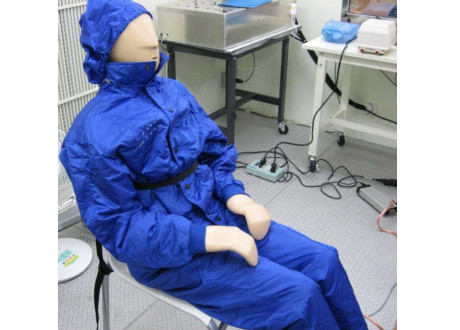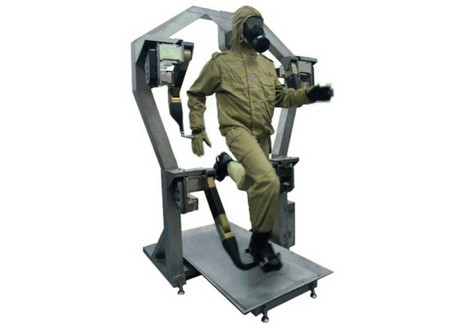Evaluate cold weather clothing with Thermal Manikin
This chapter discusses the use of thermal models to measure the insulation value and evaporative resistance of cold weather clothing suits. Thermal Manikin data can be used in heat loss models to predict comfortable environmental conditions. The pumping effectiveness of garments can be measured by walking the Thermal Manikin, and the effectiveness of phase change materials in cold weather garments can be assessed by moving the Thermal Manikin between chambers at different ambient temperatures.

Sweating Thermal Manikin has also been used to evaluate and compare the effectiveness of individual liquid-cooled garments when used in conjunction with protective clothing.Sweating Thermal Manikin has been used by many researchers to measure the thermal resistance and evaporative resistance of clothing systems. Recent trends in Sweating Thermal Manikin have focused on modelling specific heated areas of the human body, such as the head, hands, feet and lower legs, in order to more accurately evaluate the thermal efficiency of materials used in helmets, gloves or finger gloves, footwear and socks. It is worth noting that the Sweating Thermal Manikin does not simulate the human body in a physiological sense; it is a thermometric device that is similar in size and shape to an ordinary human being and when heated its body surface temperature simulates the local and average surface temperature of the human body, but they do not respond in time to changes in the environment or clothing as humans do. In this paper, we firstly classify Sweating Thermal Manikin; secondly, we measure the thermal resistance and evaporative resistance of protective clothing based on Sweating Thermal Manikin respectively to characterise the comfort and safety of protective clothing. Compared to ordinary clothing, protective clothing is made up of specific materials, has an innovative fastening system and is unique in its design.
Sweating Thermal Manikin can reflect the factors that affect the heat exchange between the human body and the environment, these factors include:
① The surface area of the human body covered by fabric and the surface area of exposed skin;
②The distribution of the clothing layer and the air layer on the surface of the human body (that is, non-uniformity);
③ Tightness;
④ Due to the increase of the heat dissipation area after the human body is dressed (that is, the clothing area coefficient);
⑤ Influence of product design;
⑥Changes in clothing characteristics (zippers are opened, headscarves are worn, etc.);
⑦ Differences in temperature (and heat dissipation) of different parts of the human body;
⑧The impact of human body posture (such as standing, sitting, lying down);
⑨The impact of human activities (such as walking, cycling);
⑩The Sweating Thermal Manikin test can reflect the real situation, because such a test can quantitatively describe the impact of the clothing system on the heat exchange between the entire human body and the environment.

Sweating Thermal Manikin will continue to be used to measure the thermal resistance and evaporative impedance of protective clothing systems. A useful tool in the development of protective clothing systems, Sweating Thermal Manikin can be used to evaluate protective clothing under steady state and transient conditions, as well as to predict wearer comfort (or thermal stress). Although the Sweating Thermal Manikin is easy to use, dummies, artificial climate chambers, computer control and data acquisition systems are expensive and complex to maintain, the Sweating Thermal Manikin is an important piece of equipment for protective clothing evaluation research and its research, development and application are of great practical importance. It is believed that with the cooperation of all relevant research institutions, the Sweating Thermal Manikin testing technology will be further developed in the near future.
It is of great significance to evaluate the comfort and performance of protective clothing systems. More and more standard test methods use a life-sized Sweating Thermal Manikin to test the performance of protective clothing systems. Walter Sweating Fabric Manikin was used to evaluate the fire resistance and airtightness of different types of protective clothing.
2023-01-06 10:14
- Related News
The importance of battery internal resistance testing in the battery manufacturi
Application and structural principle of high and low temperature test chamber
Application of Small Coating Machine in Polyimide Slurry
Principles and selection methods of laboratory incubators
Evaluation of Moisture Absorption and Rapid Drying Performance of Textiles by Na
Liquid Moisture Management Tester
Paper ring compression strength tester standards
